‘Where I found happiness’: A man’s return to Pag-asa Island for hope
In a section of Buliluyan Port in Palawan, a small Elf truck stopped, carrying boxes, food, and small furniture like wooden chairs, tables, as well as sacks of vegetables and other crops. Here, a man in his 40s wearing a gray hoodie and shades was busy unloading the items from the Elf truck onto the […]
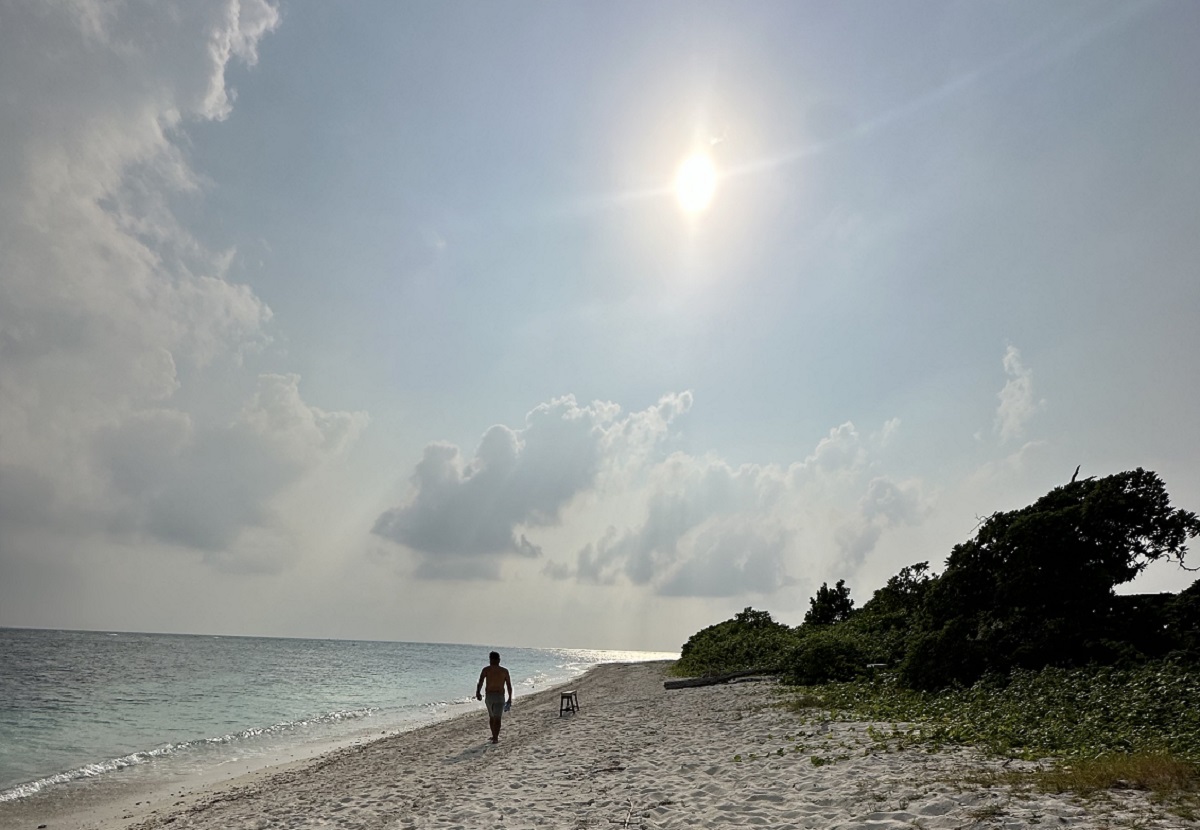

In a section of Buliluyan Port in Palawan, a small Elf truck stopped, carrying boxes, food, and small furniture like wooden chairs, tables, as well as sacks of vegetables and other crops.
Here, a man in his 40s wearing a gray hoodie and shades was busy unloading the items from the Elf truck onto the BRP Cabra, one of the vessels of the Philippine Coast Guard bound for Pag-asa Island.
Pag-asa Island is located 277 kilometers away from mainland Palawan and part of the Kalayaan island group. Covering an area of 32.7 hectares, it is the largest among the Kalayaan islands.
The man who owns the items in the Elf truck was Rando Asiado, who was hitching a ride on the BRP Cabra to return to Pag-asa Island where he resides.
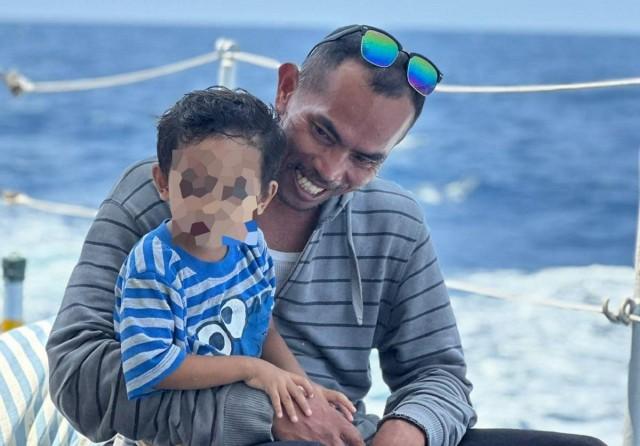
Rando Asiado first went to Pag-asa Island in 2012 as a construction worker. He fell in love with the place that he decided to bring his family there. JP SORIANO
Asiado learned from the Kalayaan municipality’s sub-office in Palawan that a PCG vessel would be visiting Palawan for a routine maritime mission. Seizing the opportunity, he packed all his belongings and informed his wife and two sons that they are returning to Pag-Asa Island.
After transferring all his belongings to the BRP Cabra, Asiado found a comfortable spot on the vessel to settle in for the long journey. I, too, was aboard the ship to cover the routine maritime mission of the Philippine government in Pag-asa Island and the West Philippine Sea.
Asiado shared that in 2012, he first set foot on Pag-asa Island, working as a construction worker for one of the government facilities being developed there. Leaving his wife, Deborah, and their nine-year-old son in Puerto Princesa, Palawan, he worked on Pag-asa Island for a year.
Amid the isolation from the rest of the Philippines, Asiado found solace on Pag-asa Island. The following year, he brought his wife and son to the island. It was there that his son completed elementary school, in the island’s integrated public school.
“It’s like our family’s own place in Pag-asa because I’ve been a voter there as well. The place became dear to me, and life here is lighter compared to the mainland,” Asiado saind Tagalog.
When Asiado’s construction job on the island ended in 2013, leaving him without work or income, he turned to fishing, a skill he was familiar with from his time in mainland Palawan. With the savings from his construction work, he acquired a small boat to fish around Pag-asa Island.
Asiado said back in 2013, there was an abundance of large fish species in the island’s waters. He found himself thriving as a fisherman, providing enough sustenance for his family, especially when Deborah became pregnant with their second child.
“Fishing around Pag-asa Island is much better than the mainland. It is difficult to catch fish there, and selling it is a challenge. Here, as soon as you bring down your catch, soldiers or civilians are already there to buy your fish,” he said.
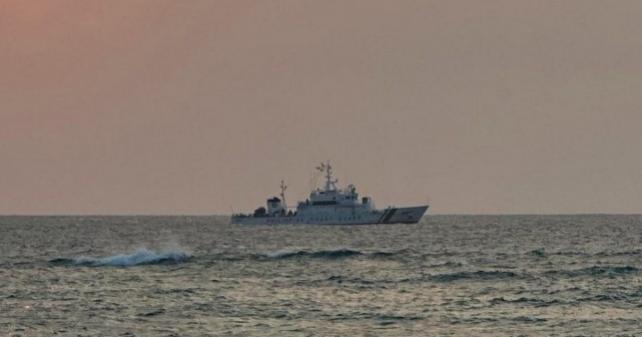
A Philippine Coast Guard ship patrolling the waters off Pag-asa Island is a common sighting among residents of the island amid the presence of Chinese vessels. JP SORIANO
However, fishing became increasingly challenging in Pag-asa Island due to the presence of Chinese militia vessels that started multiplying in numbers after 2016. These vessels not only patrolled the waters but also deterred local fishermen like Asiado from fishing in certain areas.
Asiado emphasized how the Chinese vessels would screen and drive them away when they attempted to fish in specific locations. He specifically shared that they used to fish in the waters surrounding Sandy Cays, but the presence of the Chinese militia and even the China Coast Guard prevented them from doing so.
Despite this, Asiado said they could still fish, but only in areas very close to the main Pag-asa Island. He also said as much as possible, he tries to avoid the Chinese.
“If I were to fish, I wouldn’t approach them. If they come towards me, I avoid them, I move away,” Asiado said
Asiado narrated that when China completed the full construction of one of its illegally reclaimed islands, Subi Reef, he and other Filipino fishermen were barred from accessing other parts of the waters near Pag-asa Island. He recalled, “Since they built that airport of theirs, we haven’t been able to enter [our usual fishing grounds].”
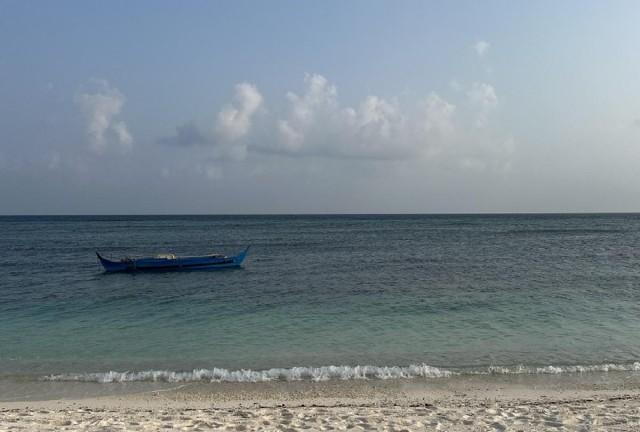
fishing became increasingly challenging in Pag-Asa Island due to the presence of Chinese militia vessels that started multiplying in numbers after 2016. JP SORIANO
Recently, marine researchers from the University of the Philippines discovered that the coral reefs and marine biodiversity in the waters around Pag-asa are no longer thriving, and that the once diverse marine life has significantly depleted due to overfishing.
During their time on Pag-asa Island, they witnessed a Chinese maritime vessel shining powerful lights into the waters, a sign often linked to extensive fishing activities. Authorities have yet to confirm if there were indeed fishing operations by China in the area.
Despite the challenges with China in Pag-asa Island, Asiado chose to stay there until he had to leave in January this year to mourn his father’s passing and settle some matters in Puerto Princesa. As soon as he arranged his father’s affairs, he made the decision to return to Pag-asa Island with his entire family.
Asiado expressed that even with the presence and harassment from a foreign country, he finds his greatest happiness in Pag-asa, where his family, including his two sons, have found a true home.
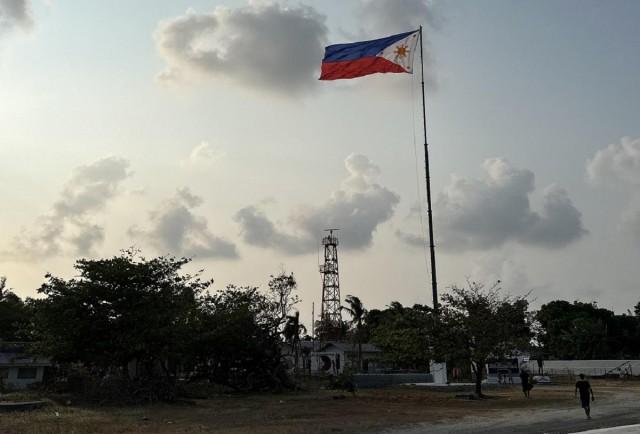
A Philippine flag rises high on Pag-asa Island, as residents are reminded during flag-raising ceremonies in military and civilian outposts that the place is part of the Philippine territory. JP SORIANO
Moreover, as a Filipino, Asiado believes he has a duty to return. As a fisherman from Pag-asa, he sees himself as the eyes and ears of the Philippine government, reporting any irregularities to the authorities safeguarding the island.
Despite the presence of Chinese ships surrounding Pag-asa Island, residents and guards remain unperturbed. Every morning, residents are reminded that the island is part of the Philippines through flag-raising ceremonies in military and civilian outposts.
Similar to other places in the Philippines and despite the remoteness, life on Pag-asa Island mirrors any simple barangay in the country. There are sari-sari stores, neighbors chatting in the afternoon, and videoke sessions.
But as I explored, improvements were noticeable on the island. The roads are paved, and many renovations are ongoing. Although simple, the beauty of the island is truly paradisiacal. —KBK, GMA Integrated News














